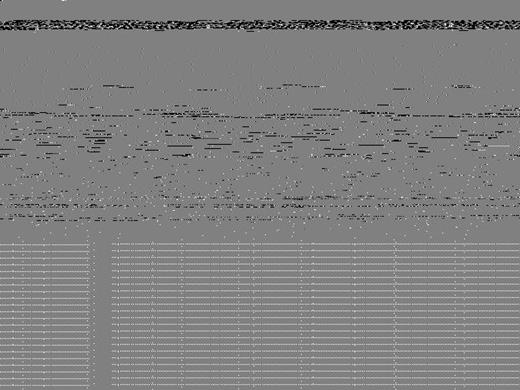Abstract
We describe the pattern and incidence of SMNs with 10 additional years of follow-up of an international cohort (Bhatia, N Engl J Med, 1996; Bhatia, J Clin Oncol, 2003) of children with HL diagnosed between 1955 and 1986 at age 16 y or younger.
Medical record review was used to identify SMNs, define vital status and describe therapeutic exposures. Pathology reports served to validate SMNs. Cumulative incidence (CI) utilized competing risk methods. Standardized incidence ratio (SIR) and absolute excess risk (AER/10,000 p-y) utilized age-, gender- and year-matched rates in the general population. Cox regression techniques (using calendar time as time scale) identified predictors of SMN risk.
The cohort included 1023 patients diagnosed with HL at a median age of 11 y, and followed for a median of 26.8 y (IQR, 16.4-33.7). Eighty-nine percent had received radiation, either alone (22%), or in combination with chemotherapy (67%). Alkylating agent (AA) score was defined as follows: 1 AA for 6 m = AA score of 1; 2 AA for 6 m or 1 AA for 12 m = AA score of 2, etc. The AA score was 1-2 for 54% and 3+ for 16%; 30% did not receive AA. A total of 188 solid SMNs developed in 139 patients (breast [54], thyroid [24], lung [11], colorectal [11], bone [8], other malignancies [80]. Table summarizes SIR (95%CI), CI, and AER by attained age. The cohort was at an 11.1-fold increased risk of developing solid SMNs (excluding non-melanoma skin cancers) compared with the general population (95% CI, 9.4-13.0). CI of solid SMNs was 25.2% at 40 y from HL diagnosis (Fig 1). Among patients aged ≥40 y, 79% of total AER was attributable to breast, thyroid, colorectal and lung SMNs (Table). Thirty-seven patients developed >1 solid SMN; the cumulative incidence of the 2nd SMN was 19.6% at 10 years from diagnosis of the 1st SMN. Breast Cancer: Females (n=41) had a 20.9-fold increased risk, and males (n=3) a 45.8-fold increased risk c/w general population. Age at HL of 10-16 y vs. <10 y (RR=9.7, 95%CI, 2.3-40.6, p=0.002), and exposure to chest radiation (RR=5.9, 95%CI, 1.4-25.9) were associated with increased risk. Among females aged 10-16 y at chest radiation, cumulative incidence was 24.3% by age 45 y, as opposed to 2.6% for those <10 y, p=0.001 (Fig 2). Exposure to AA was associated with a lower risk (RR=0.4, p=0.002). Diagnosis of HL after 1975 was associated with decreased risk (RR=0.25, 95%CI 0.12-0.53), explained, in part by the increasing use of AA after 1975 (78%) vs. before 1975 (61%). By age 40 y, the risk of breast cancer among females exposed to chest radiation at age 10-16 y (18.2%) was comparable to the risk for BRCA1 mutation carriers (15%-20% by age 40 y; Chen, J Clin Oncol, 2007). Lung cancer: Ten of 11 lung cancer cases were diagnosed in males (males: SIR=24.7; females: SIR=3.2, p=0.05); all had received neck/chest radiation. The CI of lung cancer among males was 3.8% by age 50 y, comparable to the risk among male smokers (2% by age 50 y, Bilello, Clinics Chest Med, 2002). Colorectal cancer: There was a 11.5-fold increased risk c/w general population. The CI among those with abdominal/pelvic radiation was 4.1% by age 50 y ; this risk is higher than that observed in individuals with ≥2 first degree relatives affected with colorectal cancer (1.2% by age 50 y, Butterworth, Eur J Cancer, 2006). Thyroid cancer: Survivors had a 22.2-fold increased risk; all developed within radiation field. Females (RR=4.3, 95%CI 1.8-10.4) were at increased risk.
| . | Breast (n=44) . | Thyroid (n=24) . | Colorectal (n=11) . | Lung (n=11) . |
|---|---|---|---|---|
| Median age at diagnosis in yrs (range) | 37 (24-49) | 36 (17-53) | 36 (29-53) | 41 (22-46) |
| Median latency from HL in yrs (range) | 25 ( 10-40) | 28 (8-45) | 25 (16-45) | 28 (12-34) |
| SIR (95% CI) | ||||
| Overall | 21.7 (15.9-28.7) | 22.2 (14.4-32.2) | 11.5 (6.0-19.6) | 15.2 (7.9-26.1) |
| Males | 45.8 (11.4-1118) | 31.4 (16.3-53.8) | 13.5 (6.2-25.1) | 24.7 (12.4-43.2) |
| Females | 20.9 (15.1-27.9) | 17.7 (9.8-29.2) | 8.2 (2.0-21.2) | 3.2 (0.2-13.9) |
| Cumulative Incidence in yrs form HL diagnosis | ||||
| 20 y | 4.7% (F); 0% (M) | 1.0% | 0.3% | 0.2% |
| 30 y | 12.% (F); 0.2% (M) | 2.2% | 1.1% | 0.9% |
| 40 y | 20.5% (F); 1.1% (M) | 4.8% | 2.0% | 2.3% |
| AER/ 10,000 p-y by attained age in y | ||||
| <20 y | 0 | 0.2 | 0 | 0 |
| 20-39y | 2.5 | 1.2 | 0.5 | 0.4 |
| ≥40 y | 7.4 | 3.6 | 2.0 | 2.5 |
| . | Breast (n=44) . | Thyroid (n=24) . | Colorectal (n=11) . | Lung (n=11) . |
|---|---|---|---|---|
| Median age at diagnosis in yrs (range) | 37 (24-49) | 36 (17-53) | 36 (29-53) | 41 (22-46) |
| Median latency from HL in yrs (range) | 25 ( 10-40) | 28 (8-45) | 25 (16-45) | 28 (12-34) |
| SIR (95% CI) | ||||
| Overall | 21.7 (15.9-28.7) | 22.2 (14.4-32.2) | 11.5 (6.0-19.6) | 15.2 (7.9-26.1) |
| Males | 45.8 (11.4-1118) | 31.4 (16.3-53.8) | 13.5 (6.2-25.1) | 24.7 (12.4-43.2) |
| Females | 20.9 (15.1-27.9) | 17.7 (9.8-29.2) | 8.2 (2.0-21.2) | 3.2 (0.2-13.9) |
| Cumulative Incidence in yrs form HL diagnosis | ||||
| 20 y | 4.7% (F); 0% (M) | 1.0% | 0.3% | 0.2% |
| 30 y | 12.% (F); 0.2% (M) | 2.2% | 1.1% | 0.9% |
| 40 y | 20.5% (F); 1.1% (M) | 4.8% | 2.0% | 2.3% |
| AER/ 10,000 p-y by attained age in y | ||||
| <20 y | 0 | 0.2 | 0 | 0 |
| 20-39y | 2.5 | 1.2 | 0.5 | 0.4 |
| ≥40 y | 7.4 | 3.6 | 2.0 | 2.5 |
In this cohort of HL survivors with 20,344 p-y of follow-up, the greatest excess risk of SMNs among those > 40 y was attributable to breast, thyroid, colorectal and lung SMNs. Observed risks for the most common SMNs were comparable to or greater than known high-risk groups within the general population.
No relevant conflicts of interest to declare.
Author notes
Asterisk with author names denotes non-ASH members.



This feature is available to Subscribers Only
Sign In or Create an Account Close Modal